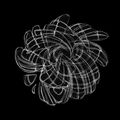Template:Selected anniversaries/September 21: Difference between revisions
No edit summary |
No edit summary |
||
| (One intermediate revision by the same user not shown) | |||
| Line 1: | Line 1: | ||
<gallery> | <gallery> | ||
File:Gerolamo Cardano.jpg|link=Gerolamo Cardano (nonfiction)|1576: [[Gerolamo Cardano (nonfiction)|Gerolamo Cardano]] dies. He was one of the most influential mathematicians of the Renaissance. | File:Gerolamo Cardano.jpg|link=Gerolamo Cardano (nonfiction)|1576: [[Gerolamo Cardano (nonfiction)|Gerolamo Cardano]] dies. He was one of the most influential mathematicians of the Renaissance. | ||
File:Joseph-Louis Lagrange.jpg|link=Joseph-Louis Lagrange (nonfiction)|1781: [[Joseph-Louis Lagrange (nonfiction)|Joseph-Louis Lagrange]] writes to d'Alembert: "It appears to me also that the mine [of mathematics] is already very deep and that unless one discovers new veins it will be necessary sooner or later to abandon it." This view is prevalent at the end of the eighteenth century. | File:Joseph-Louis Lagrange.jpg|link=Joseph-Louis Lagrange (nonfiction)|1781: [[Joseph-Louis Lagrange (nonfiction)|Joseph-Louis Lagrange]] writes to d'Alembert: "It appears to me also that the mine [of mathematics] is already very deep and that unless one discovers new veins it will be necessary sooner or later to abandon it." This view is prevalent at the end of the eighteenth century. | ||
| Line 13: | Line 11: | ||
File:Heike Kamerlingh Onnes.jpg|link=Heike Kamerlingh Onnes (nonfiction)|1853: Physicist and academic [[Heike Kamerlingh Onnes (nonfiction)|Heike Kamerlingh Onnes]] born. He will receive widespread recognition for his work, including the 1913 Nobel Prize in Physics for "his investigations on the properties of matter at low temperatures which led, ''inter alia'', to the production of liquid helium". | File:Heike Kamerlingh Onnes.jpg|link=Heike Kamerlingh Onnes (nonfiction)|1853: Physicist and academic [[Heike Kamerlingh Onnes (nonfiction)|Heike Kamerlingh Onnes]] born. He will receive widespread recognition for his work, including the 1913 Nobel Prize in Physics for "his investigations on the properties of matter at low temperatures which led, ''inter alia'', to the production of liquid helium". | ||
||1860: Second Opium War: An Anglo-French force defeats Chinese troops at the Battle of Palikao. | ||1860: Second Opium War: An Anglo-French force defeats Chinese troops at the Battle of Palikao. | ||
| Line 60: | Line 56: | ||
||1996: Erika Cremer dies ... physical chemist and Professor Emeritus at the University of Innsbruck who is regarded as one of the most important pioneer in gas chromatography. Pic. | ||1996: Erika Cremer dies ... physical chemist and Professor Emeritus at the University of Innsbruck who is regarded as one of the most important pioneer in gas chromatography. Pic. | ||
||2002: Robert L. Forward dies ... physicist and engineer. | ||2002: Robert L. Forward dies ... physicist and engineer. Pic. | ||
||2003: The Galileo Probe is terminated by sending it into Jupiter. | ||2003: The Galileo Probe is terminated by sending it into Jupiter. | ||
Latest revision as of 13:04, 7 February 2022
1576: Gerolamo Cardano dies. He was one of the most influential mathematicians of the Renaissance.
1781: Joseph-Louis Lagrange writes to d'Alembert: "It appears to me also that the mine [of mathematics] is already very deep and that unless one discovers new veins it will be necessary sooner or later to abandon it." This view is prevalent at the end of the eighteenth century.
1792: French Revolution: The National Convention declares France a republic and abolishes the absolute monarchy.
1853: Physicist and academic Heike Kamerlingh Onnes born. He will receive widespread recognition for his work, including the 1913 Nobel Prize in Physics for "his investigations on the properties of matter at low temperatures which led, inter alia, to the production of liquid helium".
2018: Signed first edition of Spiral used in high-energy literature experiments unexpectedly develops spontaneous artificial intelligence.

![1781: Joseph-Louis Lagrange writes to d'Alembert: "It appears to me also that the mine [of mathematics] is already very deep and that unless one discovers new veins it will be necessary sooner or later to abandon it." This view is prevalent at the end of the eighteenth century.](/w/images/thumb/c/c8/Joseph-Louis_Lagrange.jpg/107px-Joseph-Louis_Lagrange.jpg)


